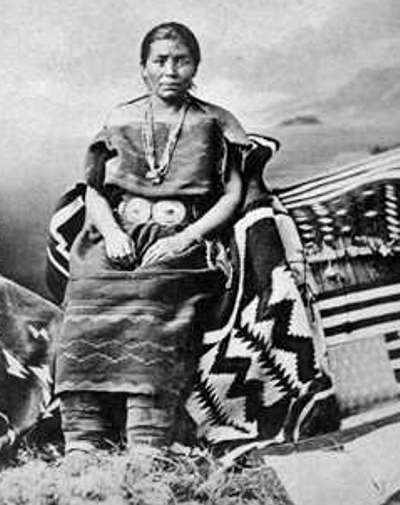In the past, each Navajo band was led by its own chief, who was chosen by a tribal council. Most important decisions were made by the council, and all the Navajo councilmembers had to agree before an action could be taken. A Navajo chief was more like a tribal chairman than a king. Most of his job was mediating between the other Navajos. Today, the Navajo Nation is led by a president and tribal council that are elected by all the people.
Today, many of these gender roles have changed. Navajo men are often farmers and ranchers now... and Navajo women join the Army.


The Navajos did not traditionally wear Indian headdresses. Navajo men usually wore cloth headbands tied around their foreheads instead. Both men and women wore their hair gathered into a figure-eight shaped bun called a tsiyeel, though some Navajo men did begin cutting their hair to shoulder-length in the Pueblo style during the early 1900's. Except for certain religious ceremonies, the Navajos didn't paint their faces or bodies. But they are famous for their beautiful silver and turquoise ornaments, particularly concha belts (made of interconnected silver medallions), brooches, and jewelry.
Natural Resources:
- Animals: The desert animals were reptiles and snakes. Livestock included sheep and goats and wild turkey
- Crops: The crops grown in the area were corn, beans, sunflower seeds and squash
http://www.bigorrin.org/navajo_kids.htm
https://www.warpaths2peacepipes.com/indian-tribes/navajo-tribe.htm


Awesome post.Thanks For share this post wit us.The urge to boost our physical look with jewellery is unchanged.Man leather Bracelet part of our body is adorned with jewellery, be it ear rings for the ears, anklets String Bracelet ankles or neckpieces for the necks.
ReplyDelete